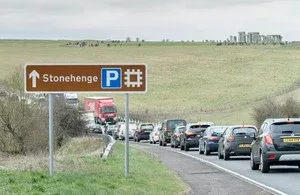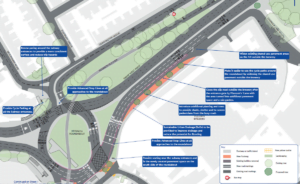World heritage organisation Unesco has called for various alternative options for the Stonehenge Tunnel route to be considered before the project is given the go ahead.
The report was submitted by Unesco to transport secretary Grant Shapps to be considered as part of the process to look again at the development consent order (DCO) application. The report emphasises that, while the proposed tunnel and removal of the current surface highway would have a “positive impact” on the world heritage site (WHS), the construction of dual carriageway in cuttings at either end of the tunnel would “adversely and irreversibly impact” the WHS’ integrity, said a New Civil Engineer report.
Unesco has said that this integrity impact would be due to the removal of archaeological features and deposits, through disrupting the spatial and visual links between monuments and as a result of its overall visual impact.
The report contains the findings of an Unesco Advisory Mission visit to Stonehenge in April. It calls for National Highways to consider alternative options “in order to explore fully the available opportunities to avoid impacts” on the WHS.
The current plans are for a 12.8km dual carriageway and a 3.2km tunnel underneath the WHS, closely following the existing A303 route. National Highways estimates the scheme will cost £1.7bn to deliver, but opponents have suggested that a longer tunnel would help avoid damaging the historic site.
Mr Shapps is currently in the process of “re-determining” his decision on the planning application after a High Court judge ruled his original decision to approve the scheme as “unlawful”. As part of the process, Shapps has asked National Highways to conduct a comparative analysis which looks at extending the tunnel, said the New Civil Engineer report.
The Unesco report says: “An alternative route, which re-routes the A303 completely around the WHS, and enables the complete closure of the existing section of the A303 within the WHS, would provide the best option for minimising any negative impact and enhancing positive benefits to the outstanding universal value (OUV) of the property.
“A tunnel beneath the entire length of the WHS would provide the next best option for the OUV of the inscribed property. Insofar as such a tunnel is not feasible, then the alternative should be to extend the underground section of the scheme at least to the western boundary, with areas to be excavated subject to comprehensive archaeological investigation, salvage and mitigation.”
It adds: “If the scheme proceeds, the minimum change required, in light of the above considerations, would be an extension of the underground section of the western approach, either in tunnel and/or cut-and-cover, at least to the western boundary of the WHS.
“The western portal should be re-located as far to the west as reasonably practical, thereby reducing the length of the cut-and-cover section and minimising the extent of archaeological resources which must be removed.”
In response, National Highways said in a statement: “Although the western portal approach remains an area for further discussion, Unesco recognises the exemplary collaborative work carried out in the development of this scheme, which will have many benefits, including returning Stonehenge to something like its original setting.
“We have taken a lot of care to get to this point. Unesco is pleased with all the work undertaken since their last visit in 2018 and particularly praised the work of our independent Scientific Committee, which has been key to ensuring experts guide our development at every stage.”
Other respondents included the Stonehenge Alliance, which “remains of the opinion” that before the scheme is re-determined “formal re-examination” should be undertaken.
Its submission adds: “In this way it would enable the considerable amount of new information/submissions now made available, notably on longer tunnel alternatives, carbon, traffic modelling, the business case and geological and hydrogeological matters, to be placed before a suitably qualified panel of Inspectors for proper scrutiny.”
Meanwhile Historic England said that “the amended bored tunnel and cut and cover tunnel alternatives would offer additional potential benefits for cultural heritage assets and asset groups”.





















